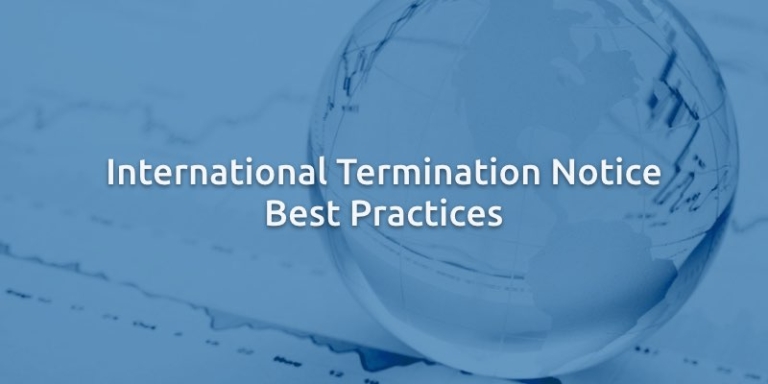Expand into new markets with confidence
Schedule a callInternational labor regulations surrounding terminations are constantly changing. It is vital for business managers and HR directors to monitor termination requirements and avoid legal disputes.
A PwC study shows that the average length of an overseas hire has decreased from three years or longer to just 18 months. This significant drop in time suggests that companies should be aware of regulations and potential exposures in regard to employment terminations.
Below, we have outlined the best practices for international terminations.
1. Understand Local Termination Policies
The consequences of not properly following local termination and offboarding policies can range from hefty fines to lawsuits. Have an understanding of local termination policies before creating and signing an employment contract to avoid future headaches.
For example, an employee working for a U.S. company in the UAE would have more employment rights under the laws of the UAE, rather than the typical U.S. at will employment policy. If the employee is terminated, they could choose to invoke the UAE policy against unjustified firing, along with the statutory remedies.
For this reason, it is essential to research and understand the employment laws of a particular country before hiring and contracting employees. It’s best to have employment law specialists or work with a global partner to ensure you are drafting a compliant employment contract.
2. Understand the Full Cost of Termination Before Executing
There are many different ways countries calculate the employer’s financial responsibility to the employee during a termination. The major variables that can affect how much an employee is entitled to in a termination event are:
- Length of employment
- Mandatory payments
- Vacation accruals
- Outstanding bonuses
- Probationary period
To help understand how severance payments are calculated in various countries, we outlined four different countries and their termination policies:
- France. Employees with one year of service who are dismissed for reasons other than gross misconduct are entitled to severance compensation.
- Philippines. Separation pay is required only in cases of business closure, layoffs, or termination due to a disease.
- Qatar. After a termination or expiration of employment contract, the employer must pay the employee any outstanding payments and any amount of accrued but untaken annual leave. The employer must also pay end of service benefits. These rules also apply to employees whose employment contracts expire. Read this blog post for more details surrounding Qatar employment law.
- Saudi Arabia. The employer is required to pay the employee an end-of-service bonus. The amount is calculated by taking a half month’s wage for each of the first five years of employment and one month’s wage for each additional year of employment.
3. Have a Plan for IP Protection
Make sure you know how to properly and legally reacquire your intellectual property after a termination. Although most countries enforce IP agreements, many developing countries don’t have the mechanisms to enforce IP rights.
Best practices for protecting IP include:
- Require employees to sign a code of conduct and confidentiality, and non-disclosure agreement
- Revoke employee’s ability to access proprietary information directly after the termination
- Include non-compete clauses in the employment contract where applicable (Note: non-compete clauses are not always enforceable and are frowned upon in Europe.
Stay Compliant During International Terminations
Staying compliant is essential for businesses operating in foreign markets. Due to the high risks of terminations, many companies will work with a global partner like Pebl (previously Velocity Global) when employing talent overseas.
Our Global Work Platform allows you to hire and pay talent in over 185 countries while providing reassurance that your employment contracts and termination processes are compliant. Contact us today to learn more about our global employment solutions.
Topic:
Global Growth


